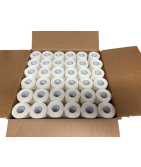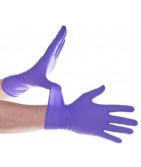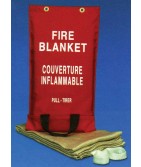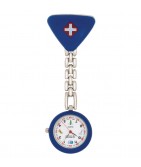Product Information
Information is available for the following products:-
- Genuine Littmann Stethoscopes
- Littmann Information & Links
- Cold Therapy
- Heat Therapy
- Stretch Gauze
- Tea Tree Oil
- Genuine Littmann Stethoscopes
-
Attention Littmann® Stethoscope Customers. We’ve become aware that counterfeit stethoscopes are being sold using the Littmann® brand via certain websites and other unauthorized outlets. While available at a lower cost than the genuine products, these scopes deliver correspondingly poor performance. To ensure that you are obtaining a genuine Littmann® Stethoscope, purchase your stethoscope only through one of 3M’s authorized distributors. Should you have any questions about the authenticity of any Littmann® Stethoscope, please contact 3M Health Care via this website or at the following number: 1-800-228-3957
The First Aid Zone is an Authorized Littmann stethoscope dealer. You are guaranteed a genuine Littmann brand product with full manufacturers warranty.
- Littmann Stethoscope Information
-
To help you evaluate which Littmann stethoscope is right for you, the following information is available to assist you.
Colour Chart for Littmann Stethoscopes {PDF file} . . .
Compare Littmann Stethoscopes {PDF file} . . .
Special Black Edition products {PDF file} . . .
- Cold Therapy
-
Cold therapy is recommended during the first one to three days after an injury (depending on it's severity) in what's known as the “acute” phase of the injury. During this time, the blood vessels around the injured tissues open up, rushing blood, nutrients and fluids to the area to help tissues healing. The problem is that the increased blood flow often causes the healthy tissues surrounding the injury to swell and become inflamed. If swelling and inflammation aren't stopped or slowed, more extensive tissue damage may occur and the injury may take longer to heal. To add insult to injury, the additional fluids in the swollen tissues may press on nerves around the injury site, increasing pain.
Cold therapy reduces swelling and inflammation in a number of ways:
- it lowers the skin temperature, which helps to constrict(narrow) the blood vessels(vascoconstriction);
- it slows the metabolic rate of the injured tissues;
- it slows the body's release of chemicals that dilate the blood vessels(vasodilation), further helping to reduce blood flow to the area.
Cold therapy also numbs the inured tissues and reduces muscle spasm, both of which help to relieve pain.
You should be aware that cold therapy can't reverse swelling that occurs before an injury is treated. But promptly treating an injury with cold therapy can help to reduce further swelling and inflammation of the surrounding tissues.
Using heat during this acute phase of an injury is not recommended because it increases blood flow, which can aggravate swelling. Heat therapy is typically started at least 72 hours after the injury occurrence and is often applied in conjunction with cold therapy (alternating cold/hot/cold applications, each for approximately 10 minutes, repeated up to three times daily).
Useful Products:
Gel Packs: These are available in four sizes – small, large, jumbo and long
- Small – 5 x 6 1/2”
- Large – 5 x 12”
- Jumbo – 10 x 12”
- Long - 4 x 22”
These are most practical for localized strains and sprains because they can be easily contoured (molded) to the injured area of the body (such as around the knee or ankle) and are appropriate when it is also necessary to apply compression and to elevate the injury, both of which further reduces swelling. Gel packs are re-useable and can serve both hot and cold therapy needs. Their use for cold therapy requires some forethought as they must be stored in the freezer for several hours prior to use.
Instant cold packs: These are available in two sizes – small and large
- Small – 4 x 6” (2 oz)
- Large – 6 x 10” (5 oz)
Instant cold packs are also ideal, and have the advantage of being less messy than homemade ice packs. They can be stored almost anywhere and can be activated when required. These single use cold packs are often found in first aid kits.
Plastic bag filled with ice or snow (bag of frozen peas)
This is an inexpensive and effective cold therapy treatment, but has the disadvantage of not always having the appropriate cold material available.
Treatment Recomendations
Cold packs should never be used for more than 30 minutes at a time (15 minutes is ideal). Deep tissue injuries take longer to cool than surface tissues. So, for example, apply cold for a longer period of time to a hamstring strain than an ankle sprain. Because muscles have a high water content and are good heat conductors, a heavier person with more body fat will require a longer cold treatment than a thin person with the same injury. If cold is kept on longer, the body thinks that it is going to freeze, so there is an opposite effect. Instead of the vessels constricting they actually dilate. Blood is shunted to that area causing skin discoloration and sometimes even frostbite.
The pack should not be placed directly on the skin. To reduce the risk of frostbite, place a damp towel or cloth between the pack and the skin. Our ice pack covers (shoulder, back, black Velcro and blue double) are ideal. Since too much cold can lead to frostbite and possibly nerve damage, discontinue the treatment when the skin turns numb and do not reapply cold until the skin has returned to a normal temperature.
Cold treatment should be repeated at regular intervals during the waking hours for the first 24 to 72 hours after sustaining an injury, or until the swelling goes down.
You should be aware that cold therapy is not for everyone. It should not be used in the very young and the very old. If you have impaired blood circulation, cold hypersensitivity, hypertension, and/or diminished or absent sensation, you should avoid cold therapy.
Generally speaking, use cold therapy to reduce swelling immediately after sustaining an injury. Use heat therapy only after the swelling has subsided (see Heat Therapy). Alternating hot and cold therapy can be a useful treatment strategy but ensure that the tissue has returned to normal ambient temperature before applying the alternative therapy.
To further reduce swelling and encourage healing during the first 24-72 hours, remember --- R – I – C – E
- Rest
- Ice
- Compression
- Elevation.
- Heat Therapy
-
When used in the right way and at the right time, both hot and cold therapy can relieve pain and speed healing. The key is knowing when to use fire and when to use ice.
Heat therapy may be used on an injury after the swelling and inflammation subside--which is generally after the first 72 hours. Heat therapy is also beneficial for soothing general aches and pains brought on by overexertion.
Applying heat increases the skin temperature, causing blood vessels to dilate and increasing blood flow to the area. The increased blood flow and nutrients help to nourish injured tissues on the mend. Heat also can relieve muscle spasm and pain triggered by loss of blood flow to the area. Finally, heat treatments increase the elasticity of the connective tissue collagen, helping to decrease joint stiffness. Heat therapy is especially helpful in the treatment of torn muscles and tendons, but again, only after the inflammation and swelling have gone down.
To avoid skin burns wrap a towel around the heat pack or use a hot pack holders (back,shoulder, black Velcro and blue double pack holder) before applying it to the injury. A single treatment can last for as long as 20-30 minutes, but as with cold therapy, you should let your comfort levels be your guide as to how long treatment lasts.
You should be aware that hot therapies are not for everyone. They should not be used in the very young and the very old. And if you have impaired blood circulation, hot hypersensitivity, hypertension, and/or diminished or absent sensation, you should avoid hot therapy.
Arthritic patients should be advised by a qualified practitioner. Heat may not be applied to arthritic joints that are swollen.
Gel packs are safer than electric heating pads because the gel packs gradually lose heat and become cooler. With electric heating pads there can be enough exposure to cause skin damage because the pad remains hot until unplugged or turned off.
- Stretch Gauze
-
Stretch gauze is also known as conforming gauze. Our stretch gauze comes in 3 different sizes (2", 3" 4") and each 5 yd. roll is individually wrapped. These gauze rolls are not sterile. Stretch gauze is made from medical grade, man-made material similar to polyester. The product is latex free.
In almost all cases, a sterile gauze pad, a non adherent pad or a moist dressing is placed on the wound before wrapping with a gauze roll. The gauze roll is used primarily to help keep the sterile dressing in place. In most instances the wound is also cleaned and disinfected prior to dressing.
Once a sterile gauze pad or other dressing is covered by stretch gauze, tape can be used to secure the end of the gauze. Some extra tape between the skin and the gauze helps keep the dressing in place.
We sell 4 types of tape that are all suitable for taping gauze to itself or to the skin.
- Transpore
- Micropore
- Cotton
- Waterproof
If the wound is “leaking” heavily, several gauze pads should be used to absorb all fluids. With a properly dressed wound, no liquids should leak through to the outside.
Non Sterile gauze has a shelf life of many years, so there is no need to worry about stocking up.
Although we have determined that non sterile gauze is the most economical for our customers, we also supply sterile stretch gauze.Prior to the introduction of stretch gauze, the standard gauze was 100% cotton weave. This type of gauze is still available, but since hospitals have discontinued it’s use, we no longer stock it in our stores.
Some of our premade First Aid kits that we sell have cotton gauze in them, and they are generally wrapped in paper. They come as sterile and non sterile and are appropriately marked. If the item does not say sterile, then assume it is not, regardless of the type of packaging.
- Tea Tree Oil
-
(WARNING: For external Use only. Keep out of reach of children.)
Melaleuca Alternifolia commonly known as Tea Tree Oil is an essential oil, the subject of Australian Standard 2782-1985 published by the Standards Association of Australia, incorporated by Royal charter.
A native tree of Australia, it has been used in traditional aboriginal medicine for centuries. It is a very powerful antiseptic, anti fungal and anti viral oil and can be used in the treatment of many skin complaints such as acne, dandruff, athletes foot, cold sores and insect bites. It is all natural and is considered the strongest natural antiseptic known to man. It is virtually non-irritant, can be used on a daily basis, and it is hypo-allergenic.
As a pure essential oil, it penetrates quickly and deeply into the skin. It leaves no oily film, no greasiness, almost seeming to evaporate. It is a very strong bactericide. The oil kills surface bacteria and germs whilst penetrating deeply to disinfect the skin, with no harmful side effect.
Tea Tree Oil is found in many products. Some of its applications include…
Abrasions/Cuts/Infections: Wash thoroughly then apply 2-3 times daily with a cotton ball.
Acne: apply directly 1 to 3 times daily with a cotton bud. For large areas blend with water (1 part oil to 10 parts water)
Athlete’s Foot: Apply directly 1-3 times daily for up to 2 weeks
Insect Bites/Stings: Apply immediately for soothing relief.
Cold sores: Apply immediately when cold sore begins. Use 3 to 4 times daily for up to 5 days.
Minor Burns: Flush burn with cold water then immediately apply pure oil. May be diluted with water (1 part oil to 10 parts water)
Muscular Aches: Rub into affected areas for temporary relief. Also apply before and after exercise. If desired, add 5 ml (one teaspoon) to hot bath and soak.
Nasal/Bronchial/Sinus Congestion: Dilute one teaspoon in a vaporizer or steam bath for inhalation
Sore/Irritated Throats and Fresh Breath: Add 4 drops to 25 ml of warm water and gargle 2 to 3 times daily.
Toothache/Infected Gums and Mouth Ulcers: Apply directly to affected gums twice daily for up to 7 days
Pets: For general pet care and treatment for flea and tic bites etc. Eczema and Mange, add 5 to 10 drops when using shampoo and leave for a few minutes then rinse.
Salon Uses: Prevents ingrown hair, eliminates redness after waxing
{This information is provided for informational purposes only and should not be taken as medical advise. Consult with your physician before starting any treatment program.}


















